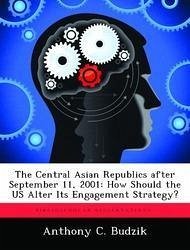This document discusses changes needed in US strategy for the Central Asian Republics. It uses events of September 11th as the turning point in US efforts. It describes the previous strategy used in the area and some of the foundations upon which it was built. Using articles and transcripts of congressional testimony, the paper further defines the changes that resulted within both the US and the Central Asian region that facilitate a revision in strategy. Any new strategy will need to treat each country separately. Kazakhstan, Kyrgyzstan, Tajikistan, Turkmenistan, and Uzbekistan are all at a different point in their evolution. They have different problems and use different resources to deal with these challenges. The final portion of the document describes an engagement strategy for the region based on two possible outcomes in Afghanistan. If Al Qaeda and Taliban leadership are not captured, security operations should continue to be the focus. If the immediate threat of terrorism is neutralized, military operations should involve stability, nation-building and humanitarian efforts.
Hinweis: Dieser Artikel kann nur an eine deutsche Lieferadresse ausgeliefert werden.
Hinweis: Dieser Artikel kann nur an eine deutsche Lieferadresse ausgeliefert werden.








